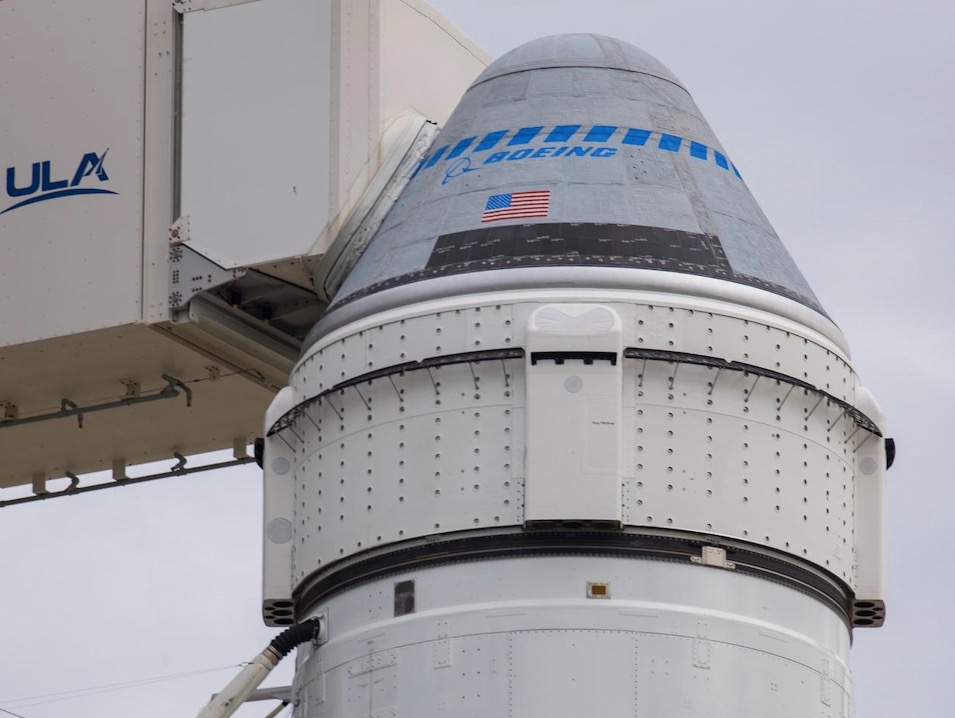
The valve problem that has kept Boeing's Starliner astronaut taxi grounded for the past 10 weeks may soon be solved.
Starliner was supposed to launch Aug. 3 on Orbital Flight Test 2 (OFT-2), a crucial uncrewed demonstration mission to the International Space Station for NASA. But standard checkouts just a few hours before liftoff revealed that 13 of the 24 oxidizer valves in the propulsion system in Starliner's service module were stuck, nixing that plan.
An investigation soon identified the likely root cause of the valve problem — an interaction between oxidizer and water (likely humidity from the atmosphere), which produced nitric acid and other corrosive agents. And a potential fix is now on the horizon, NASA officials and Boeing representatives said during a press conference on Tuesday (Oct. 19).
In photos: Boeing's Starliner OFT-2 mission in pictures
That fix involves installing heaters in the valve system to break up corrosion products, and adding desiccant to soak up moisture as well. This double-barreled approach allowed team members to get 12 of the 13 affected valves functioning again, Michelle Parker, chief engineer at Boeing Space and Launch, said during Tuesday's briefing. And the team didn't go all-out on the lone remaining stuck valve, she added; it's been set aside for further verification work.
"We still have to finalize all this as we proceed through flight rationale and such," Parker said. "But we believe that will be our remediation path."
Two of the affected valves have been removed from the service module, and a third will be taken off soon, Steve Stich, manager of NASA’s Commercial Crew Program, said during Tuesday's briefing. Those three valves will be sent to NASA's Marshall Space Flight Center in Alabama and put into a computed tomography scanner, which will allow team members to get a look at their insides. The valves will then be taken apart to verify the cause of the stickiness problem. NASA is also doing some valve research at its White Sands Test Facility in New Mexico, Stich added.
Get the Space.com Newsletter
Breaking space news, the latest updates on rocket launches, skywatching events and more!
With this work ongoing, NASA and Boeing have not set a new target launch date for OFT-2. But the current goal is to lift off in the first half of 2022, John Vollmer, vice president and program manager for Boeing's Commercial Crew Program, said during Tuesday's briefing. That timeline is in keeping with an estimate announced by NASA earlier this month.
Boeing plans to use the same service module and the same crew module that were stacked on the launch pad at Cape Canaveral Space Force Station in early August, Vollmer added.
In 2014, Boeing signed a multibillion-dollar contract with NASA to ferry agency astronauts to and from the space station. SpaceX signed a similar deal at the time and has already launched two operational crewed missions to the orbiting lab, with a third set to lift off later this month.
Starliner can't fly astronauts until it aces OFT-2. As the mission name suggests, the coming flight will be Boeing's second crack at an uncrewed visit to the space station. During the first attempt, in December 2019, Starliner suffered a number of software glitches and got stranded in the wrong orbit for a meetup with the orbiting lab.
Mike Wall is the author of "Out There" (Grand Central Publishing, 2018; illustrated by Karl Tate), a book about the search for alien life. Follow him on Twitter @michaeldwall. Follow us on Twitter @Spacedotcom or Facebook.
Join our Space Forums to keep talking space on the latest missions, night sky and more! And if you have a news tip, correction or comment, let us know at: community@space.com.

Michael Wall is a Senior Space Writer with Space.com and joined the team in 2010. He primarily covers exoplanets, spaceflight and military space, but has been known to dabble in the space art beat. His book about the search for alien life, "Out There," was published on Nov. 13, 2018. Before becoming a science writer, Michael worked as a herpetologist and wildlife biologist. He has a Ph.D. in evolutionary biology from the University of Sydney, Australia, a bachelor's degree from the University of Arizona, and a graduate certificate in science writing from the University of California, Santa Cruz. To find out what his latest project is, you can follow Michael on Twitter.









